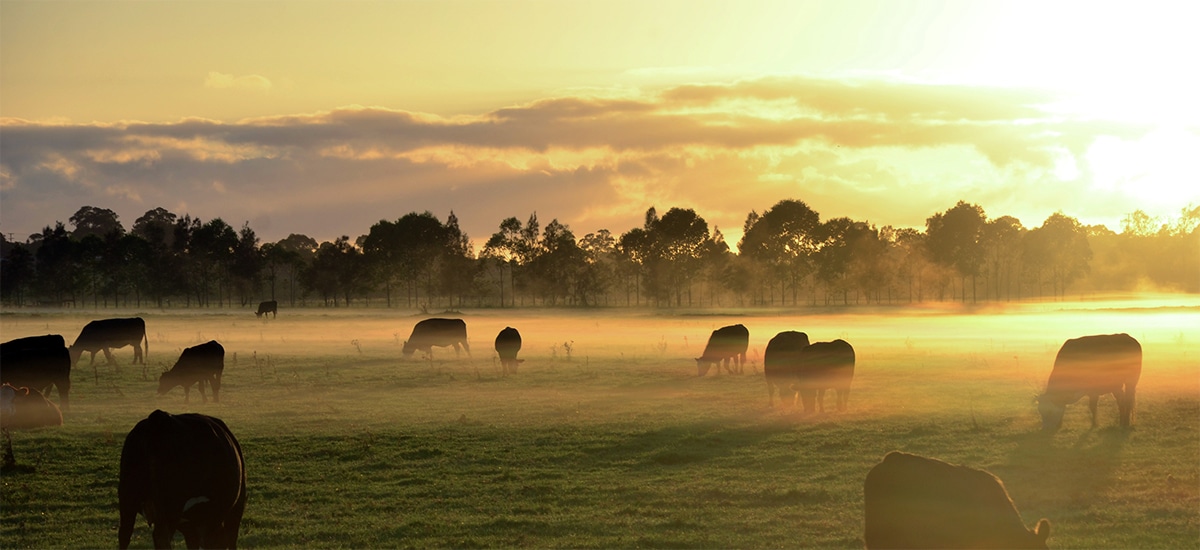
Paddock to Plate - What it all means
When it comes to good eating, the Western world has garnered a pretty shameful reputation over the last few decades. Known more for our endless fast food options and soaring rates of obesity and diabetes, than our cultural cuisines.
But globally, and in Australia particularly, there has been an ongoing shift away from such unhealthy fare. As restaurateurs the world over are discovering, the public is increasingly concerned about where and how their vegetables are grown, and how many miles their meat has travelled. Suddenly, issues such as food sustainability, desertification and animal cruelty have become sharply illuminated in the media and therefore society’s conscience.
This has resulted in a rise in popularity of organic, cruelty free and vegan options. And this in turn, has created the paddock to plate dining trend.
… it’s all about reducing the steps – and distance – between the paddock and the plate…
Paddock to plate food is all about ensuring every step your food takes between being in the ground and hoof to your dining table is carefully monitored, to ensure the food is processed sustainably, and kept as fresh and unprocessed as possible.
Not only does this method ensure we eat healthier food, it’s also great for local farmers, as it’s all about reducing the steps – and distance – between the paddock and the plate. Regional tourism is booming as properties in the Hunter and Barossa Valleys, once known solely for their wine production, are opening their doors and veggie patches. Allowing customers to buy both raw produce and delicious dishes from crops grown onsite and letting city slickers stay at the farm, to milk cows, shear sheep and harvest fruit.
A great example is the Three Blue Ducks at The Farm, in Byron Bay. It’s a biological farm that lets the whole family get back to basics; run amuck in the garden, buy fresh cut flowers and enjoy a meal that’s been tended, harvested, smoked and pickled on site.
Mark LaBrooy, head chef at the Three Blue Ducks, says it’s an incredibly rewarding experience to cook with home-grown produce.
“From a chef’s perspective, it’s been an amazing journey in Byron Bay, just as far as the produce is concerned,” he said.
He’s able to pick just his produce at just the size and stage needed for his dishes, he knows that it was grown responsibly, it can be served with incredible freshness and there is no cost for freighting the food.
Most of the high end restaurants in cities like Melbourne and Sydney are also jumping onto this trend. Many have implemented their own kitchen gardens, or at least have a specialist providore who supplies artisanal meat and vegetables when they’re at their best.
It sounds idyllic, but this style of cuisine is not without its difficulties.
“The biggest challenge at Three Blue Ducks is sticking to your ethics,” LaBrooy said.
“I’ve just taken avocados off the menu at breakfast time because they’re simply not ready to go region and we’re thinking that the crowds are going to start rioting. Consumers are so blinded by the year-round availability at our regular supermarkets. It’s almost like it doesn’t matter what the quality of the produce is like, they just need to have it. At Three Blue Ducks, we’re trying to work the other way around; we ask, what’s the quality of the produce like? We need to have it when it’s at its best.”
This is the major challenge faced by many who attempt paddock to plate style food. If you want to make truly organic and sustainable food, you have to accept the natural limitations of that method. For instance, fruit and vegetable will not be ripe all year, and there may not always be animals available for butchery when only sourced locally.
Consequently, whether the paddock to plate trend expands will depend on whether ‘mainstream’ diners, used to a constant glut of products in local supermarkets, can be persuaded to eat seasonally and mindfully.
Equipping the food industry to grow with food processing and packaging solutions
call 1300 88 99 51
email [email protected]
room 35 Shirley Way, Epping VIC 3076
room 9 Mcilwraith St, Wetherill Park NSW 2164, Australia
room 21 Hoyle Rd, Hope Valley WA 6165
room 7 Chadderton Bvd, Epping VIC 3076
room 20 Arthur Dixon Court, Yatala QLD 4207
room 22 Glassford Rd, Kewdale WA 6105
Connect with us on LinkedIn
